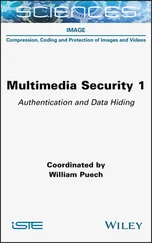There are many techniques for backing up files. The techniques you use depend on the type of data you’re backing up, how convenient you want the recovery process to be, and more.
If you view the properties of a file or directory in File Explorer, you’ll find an attribute called archive . You often use this attribute to determine whether a file or directory should be backed up. If the attribute is on, the file or directory might need to be backed up. You can perform the following basic types of backups:
■ Normal/full backupsAll files that have been selected are backed up, regardless of the archive attribute’s setting. When a file is backed up, the archive attribute is cleared. If the file is later modified, this attribute is set, indicating that the file needs to be backed up.
■ Copy backupsAll files that have been selected are backed up, regardless of the archive attribute’s setting. Unlike in a normal backup, the archive attribute on files isn’t modified. This enables you to perform other types of backups on the files at a later date.
■ Differential backupsDesigned to create backup copies of files that have changed since the last normal backup. The presence of the archive attribute indicates that the file has been modified, and only files with this attribute set are backed up. However, the archive attribute on files isn’t modified. This enables you to perform other types of backups on the files at a later date.
■ Incremental backupsDesigned to create backups of files that have changed since the most recent normal or incremental backup. The presence of the archive attribute indicates that the file has been modified, and only files with this attribute set are backed up. When a file is backed up, the archive attribute is cleared. If the file is later modified, this attribute is set, indicating that the file needs to be backed up.
■ Daily backupsDesigned to back up files by using the modification date on the file itself. If a file has been modified on the same day as the backup, the file will be backed up. This technique doesn’t change the archive attribute of files.
As part of your backup operations, you’ll probably want to perform full backups on a weekly basis and supplement this with daily, differential, or incremental backups. You might also want to create an extended backup set for monthly and quarterly backups that includes additional files that aren’t being backed up regularly.
TIP You’ll often find that weeks or months go by before anyone notices that a file or data source is missing. This doesn’t mean the file isn’t important. Although some types of data aren’t used often, they’re still needed. So don’t forget that you might also want to create extra sets of backups for monthly or quarterly periods, or for both periods, to ensure that you can recover historical data.
Differential and incremental backups
The difference between differential and incremental backups is extremely important. To understand the distinction, examine Table 11-1. As you will find, with differential backups you back up all the files that have changed since the last full backup (which means that the size of the differential backup grows over time). With incremental backups, you back up only files that have changed since the most recent full or incremental backup (which means the size of the incremental backup is usually much smaller than a full backup).
TABLE 11-1Incremental and differential backup techniques
| DAY OF WEEK |
WEEKLY FULL BACKUP WITH DAILY DIFFERENTIAL BACKUP |
WEEKLY FULL BACKUP WITH DAILY INCREMENTAL BACKUP |
| Sunday |
A full backup is performed. |
A full backup is performed. |
| Monday |
A differential backup contains all changes since Sunday. |
An incremental backup contains changes since Sunday. |
| Tuesday |
A differential backup contains all changes since Sunday. |
An incremental backup contains changes since Monday. |
| Wednesday |
A differential backup contains all changes since Sunday. |
An incremental backup contains changes since Tuesday. |
| Thursday |
A differential backup contains all changes since Sunday. |
An incremental backup contains changes since Wednesday. |
| Friday |
A differential backup contains all changes since Sunday. |
An incremental backup contains changes since Thursday. |
| Saturday |
A differential backup contains all changes since Sunday. |
An incremental backup contains changes since Friday. |
After you determine what data you’re going to back up and how often, you can select backup devices and media that support these choices. These options are covered in the next section.
Selecting backup devices and media
Many tools are available for backing up data. Some are fast and expensive, and others are slow but very reliable. The backup solution that’s right for your organization depends on many factors, including the following:
■ CapacityThe amount of data you need to back up on a routine basis. Can the backup hardware support the required load given your time and resource constraints?
■ ReliabilityThe reliability of the backup hardware and media. Can you afford to sacrifice reliability to meet budget or time needs?
■ ExtensibilityThe extensibility of the backup solution. Will this solution meet your needs as the organization grows?
■ SpeedThe speed with which data can be backed up and recovered. Can you afford to sacrifice speed with server or service downtime to reduce costs?
■ CostThe cost of the backup solution. Does it fit your budget?
Capacity, reliability, extensibility, speed, and cost are the issues driving your backup plan. If you understand how these issues affect your organization, you’ll be on track to select an appropriate backup solution. Some of the most commonly used backup solutions include the following:
■ Tape drivesTape drives are the most common backup devices. Tape drives use magnetic tape cartridges to store data. Magnetic tapes are relatively inexpensive but aren’t highly reliable. Tapes can break or stretch. They can also lose information over time. The average capacity of tape cartridges ranges from 24 gigabytes (GB) to 160 GB. Compared with other backup solutions, tape drives are slow. Still, the selling point is the low cost.
■ Digital audio tape (DAT) drivesDAT drives are quickly replacing standard tape drives as the preferred backup devices. Many DAT formats are available. The most commonly used formats are Digital Linear Tape (DLT) and Super DLT (SDLT). With SDLT 320 and 600, tapes have a capacity of either 160 GB or 300 GB uncompressed (320 GB or 600 GB compressed). Large organizations might want to look at Linear Tape Open (LTO) tape technologies. LTO-3, LTO-4, and LTO-5 tapes have uncompressed capacity of 400 GB, 800 GB, and 1500 GB, respectively (and compressed capacity of twice that).
■ Autoloader tape systemsAutoloader tape systems use a magazine of tapes to create extended backup volumes capable of meeting an enterprise’s high-capacity needs. With an autoloader system, tapes within the magazine are automatically changed as necessary during the backup or recovery process. Most autoloader tape systems use DAT tapes formatted for DLT, SDLT, or LTO. Typical DLT drives can record up to 45 GB per hour, and you can improve that speed by purchasing a tape library system with multiple drives. In this way, you can record on multiple tapes simultaneously. In contrast, most SDLT and LTO drives record over 100 GB per hour, and by using multiple drives in a system you can record hundreds of GB per hour. An example enterprise solution uses 16 LTO drives to achieve data-transfer rates of more than 13.8 terabytes (TB) per hour and can store up to 500 tapes, for a total storage capacity of more than 800 TB.
Читать дальше






